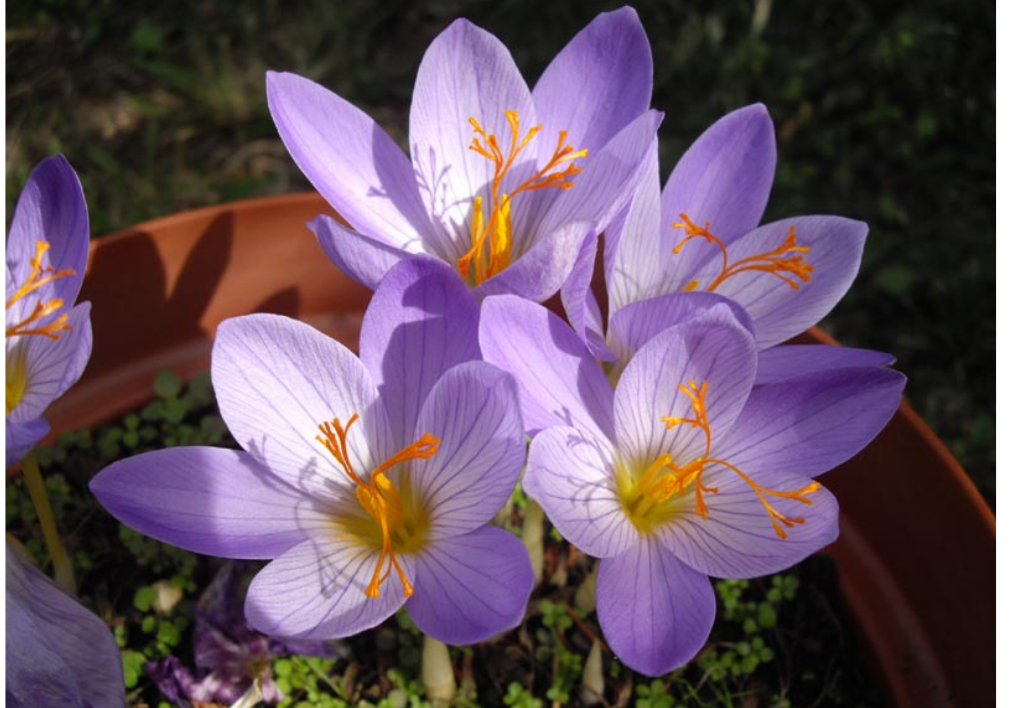They’re not just in spring: Fall blooming bulbs

JACKSONVILLE, Ill. — When it comes to bulbs this time of year, much of our attention is focused on getting ready to plant spring-blooming bulbs, and rightfully so.
From crocus and daffodils to tulips and alliums, these plants provide a burst of color early in the year before many of our landscape plants begin blooming. While spring-blooming bulbs get most of the attention, some bulbs that will bloom in the fall can provide a splash of color.
Autumn Crocus (Colchicum spp.)
Despite their common name, these plants aren’t true crocus. In fact, they aren’t even in the same family. Colchicum belongs to the Colchicaceae family (formerly part of the lily family, Liliaceae), while Crocus is in the iris family (Iridaceae). There are approximately 65 species of Colchicum, with C. autumnale being the most commonly grown, along with a variety of hybrids.
Colchicums will begin producing leaves in the spring. Each bulb (actually a corm) will produce three to eight leaves that are 8-14-inches tall. As the weather begins to warm in late spring and early summer, the leaves will begin to die back. Then, in early fall, the plants will begin to produce flowers. Each plant typically produces between three and eight flower stalks, each having one flower. The 2-3-inch blooms can last for up to two weeks and are usually light pink, but some cultivars are white.
Colchicums are hardy to zone 5 and grow best in well-drained soils in full sun or partial shade. Ideally, they should be in full sun conditions while they have leaves. Since their leaves can be unattractive, some people interplant them with plants that bloom in the spring and early summer to hide the foliage.
Crocus (Crocus spp.)
While spring-blooming crocuses get a majority of the attention, there are several species of crocus that will bloom in the fall. The most commonly grown species is probably Crocus speciosus, which is also called Autumn crocus, but you may also see it referred to as showy crocus. They are one of the earliest fall-blooming crocuses and emerge in early fall. The plants will send up 6-7-inch-tall flower stalks with typical goblet-shaped crocus flowers that are violet-blue to mauve.
Saffron crocus (Crocus sativus), while not the most widely grown fall-blooming crocus, is probably the most known. This is the plant that the spice saffron comes from. The plants grow 4-6 inches tall and have lilac-purple flowers that open a few weeks after C. speciosus. Each flower produces three reddish-orange stigmas/styles, which are harvested and dried to create saffron.
Most fall-blooming crocuses are hardy to zone 3. One exception is the saffron crocus, which is hardy to zone 6. Crocuses do best in sunny locations that are well-drained.
While we typically think of fall as the time to plant bulbs, the best time to plant many fall-blooming bulbs, like Colchicum and Crocus, is in mid to late summer while the plants are dormant.
Next time you’re looking to purchase some bulbs, consider adding some fall-blooming bulbs. They can be a great colorful addition to your fall landscape and pair nicely with other fall-blooming plants such as asters, goldenrods, and mums.
Miss Clipping Out Stories to Save for Later?
Click the Purchase Story button below to order a print of this story. We will print it for you on matte photo paper to keep forever.

